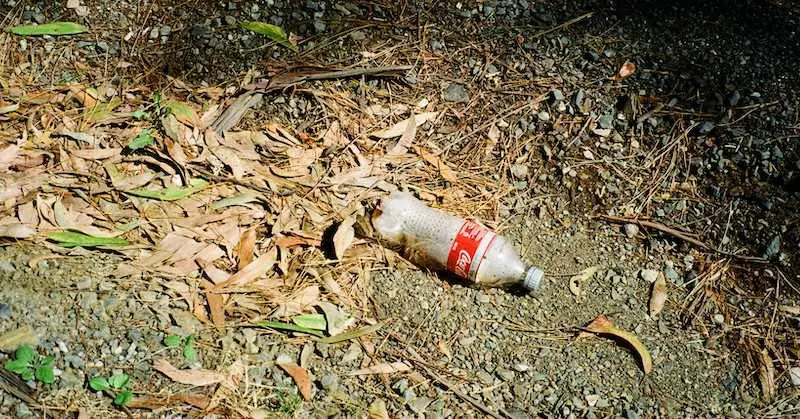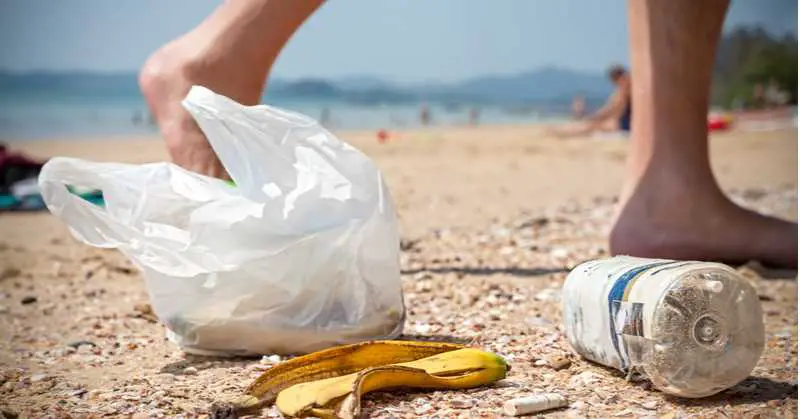
Break Free From Plastic (BFFP) is a global movement working to stop plastic pollution. They are adding teeth to the concept of volunteer cleanups by transforming cleanup participants into citizen scientists to produce audits of the plastics collected during cleanups to identify the brands behind the discarded plastics.
In September 2019, BFFP mobilized over 72,000 volunteers on World Clean Up Day to conduct almost 500 cleanups in over 50 countries on 6 continents. An audit of the 476,423 pieces of plastic waste gathered on 6 continents that ONE DAY found clear consumer brands on 43% of the items. Coca-Cola, Nestlé and PepsiCo were identified as the top first, second, and third plastic polluters. This mirrors the results of an audit conducted the previous year. The rest of the top 10 companies whose plastic refuse was tied to their brands include Mondelēz International, Unilever, Mars, P&G, Colgate-Palmolive, Phillip Morris, and Perfetti Van Melle.1
The audits are a way to track responsibility for the pollution back to the source of the product packaging rather than putting it all on the shoulders of the end consumer. Here is what Von Hernandez, the global coordinator of the Break Free from Plastic movement has to say about the results of the 2019 audit:
“This report provides more evidence that corporations urgently need to do more to address the plastic pollution crisis they’ve created. Their continued reliance on single-use plastic packaging translates to pumping more throwaway plastic into the environment. Recycling is not going to solve this problem. Break Free From Plastic’s nearly 1,800 member organizations are calling on corporations to urgently reduce their production of single-use plastic and find innovative solutions focused on alternative delivery systems that do not create pollution.” 1

What is the Process Behind the Audits?
BFFP created a toolkit for volunteers that ensures uniform identification and counting of plastic waste during an audit. A Visual Identification Card helps identify Type of Product, broken down into 6 broad categories:
- Food Packaging like plastic cups, bottles, and carryout containers;
- Household Products that can include items like cleaning product containers and even rubber duckies;
- Personal Care products ranging from toothbrushes, sanitary products, to pill bottles;
- Smoking Materials like plastic cigar holders, cigarette and cigar packages, lighters and butts;
- Fishing Gear such as nets, monofilament, lures, and equipment;
- Packing Material like foam peanuts, bubble wrap, and plastic tape
The Visual identification Guide then breaks down each type of plastic such as PET (like water bottles), PVC (like rubber duckies and pipes), HDPE (like white milk jugs), LDPE (plastic bags and trays), PP (hard food containers), PS (take-out food containers), O (other or unknown materials containing plastics and other types of materials.

Volunteers really take on the role of citizen scientists when they use the use the identification cards to fill our “brand audit data cards” to put real numbers to the type and amount of each kind of material collected during the cleanup along with any identifiable brand names.
Break Free From Plastic encourages cleanups anywhere in our communities including neighborhood streets, local parks, riverbanks, and beaches—anywhere we find single-use plastics discarded into our environments. BFFP also encourages auditing our own homes, offices, and schools to identify the scope of single-use plastics that we might be able to back away from and seek alternatives. And you can do brand audit cleanups anytime you want. You don’t have to wait until World Clean Up Day. You can use the toolkit and submit your results to BFFP.
Like any good scientists, the BFFP acknowledges limitations to their audits, stating that in the end, they can only be considered samples of what is going on around the world. The cleanup locations are chosen by the volunteers who self-report the data. What’s more, BFFP states, “This report cannot claim to be fully representative of all plastic polluters, as there are more brands than are captured in this report. It is possible, therefore, that some of those brands produce even more plastic pollution than those listed in this report. Nevertheless, taking into account the total number of countries represented in this year’s brand audits, the results should give us a good indication of the most common brands found in clean-ups around the world. Lastly, we did not accept brand audit data from participants that did not use our standard methodology or data submission platforms.” 2
The video below shares a meeting of Break Free From Plastic’s changemakers in Bali, Indonesia.
When contacted for comments about the dubious distinction of being named the #1 source of plastic pollution, Coca-Cola had to say was: “Any time our packaging ends up in our oceans – or anywhere that it doesn’t belong – is unacceptable to us…In partnership with others, we are working to address this critical global issue, both to help turn off the tap in terms of plastic waste entering our oceans and to help clean up the existing pollution.”3

Unfortunately, current recycling models are not enough to address and prevent the problems with plastic waste. BFFP shared this observation from Abigail Aguilar, Greenpeace Southeast Asia plastic campaign coordinator: “Recent commitments by corporations like Coca-Cola, Nestlé, and PepsiCo to address the crisis unfortunately continue to rely on false solutions like replacing plastic with paper or bioplastics and relying more heavily on a broken global recycling system. These strategies largely protect the outdated throwaway business model that caused the plastic pollution crisis, and will do nothing to prevent these brands from being named the top polluters again in the future.” 1
According to BFFP, Denise Patel, US Coordinator for the Global Alliance for Incinerator Alternatives (GAIA) had this to say, “The products and packaging that brands like Coca-Cola, Nestlé, and PepsiCo are churning out is turning our recycling system into garbage. China has effectively banned the import of the US and other exporting countries’ ‘recycling,’ and other countries are following suit. Plastic is being burned in incinerators across the world, exposing communities to toxic pollution. We must continue to expose these real culprits of our plastic and recycling crisis.” 1
You can read more about the “winners” in this shameful “contest” of the world’s worst plastic polluters in this excellent article from The Intercept. 2
I’ve also collected a few videos that really show the horrible impact plastics are having on our world, especially our oceans:
References
1Franklin M for Break Free From Plastic. Coca-Cola, Nestlé and PepsiCo named top plastic polluters for the second year in a row. Press Release. 23 October 2019. https://www.breakfreefromplastic.org/2019/10/23/brand-audit-report-2019-press-release/
2Break Free From Plastic. Branded, Vol. II Identifying the World’s Top Corporate Plastic Polluters. 2019. Greenpeace Philippines. https://www.breakfreefromplastic.org/wp-content/uploads/2019/10/branded-2019-web-FINAL-v2-1.pdf
3Lerner S. Coca-Cola Named Most Polluting Brand in Global Audit of Plastic Waste. The Intercept. 23 October 2019. https://theintercept.com/2019/10/23/coca-cola-plastic-waste-pollution/

This Site Was Inspired By An Interest in Protecting the Environment:
We had the privilege and joy of learning from Dr. Charlie Stine who instilled a love for the natural world through incredible field trips with the Johns Hopkins Odyssey Certificate program in Environmental Studies. At the time, the program was endorsed by the Maryland Department of Natural Resources. Sadly, after Dr. Stine retired, the program was phased out. We hope that we honor his legacy by shining a bright light on environmental issues and sharing good news about the success of various conservation programs when possible.

